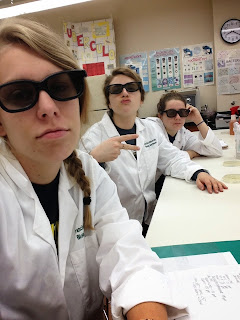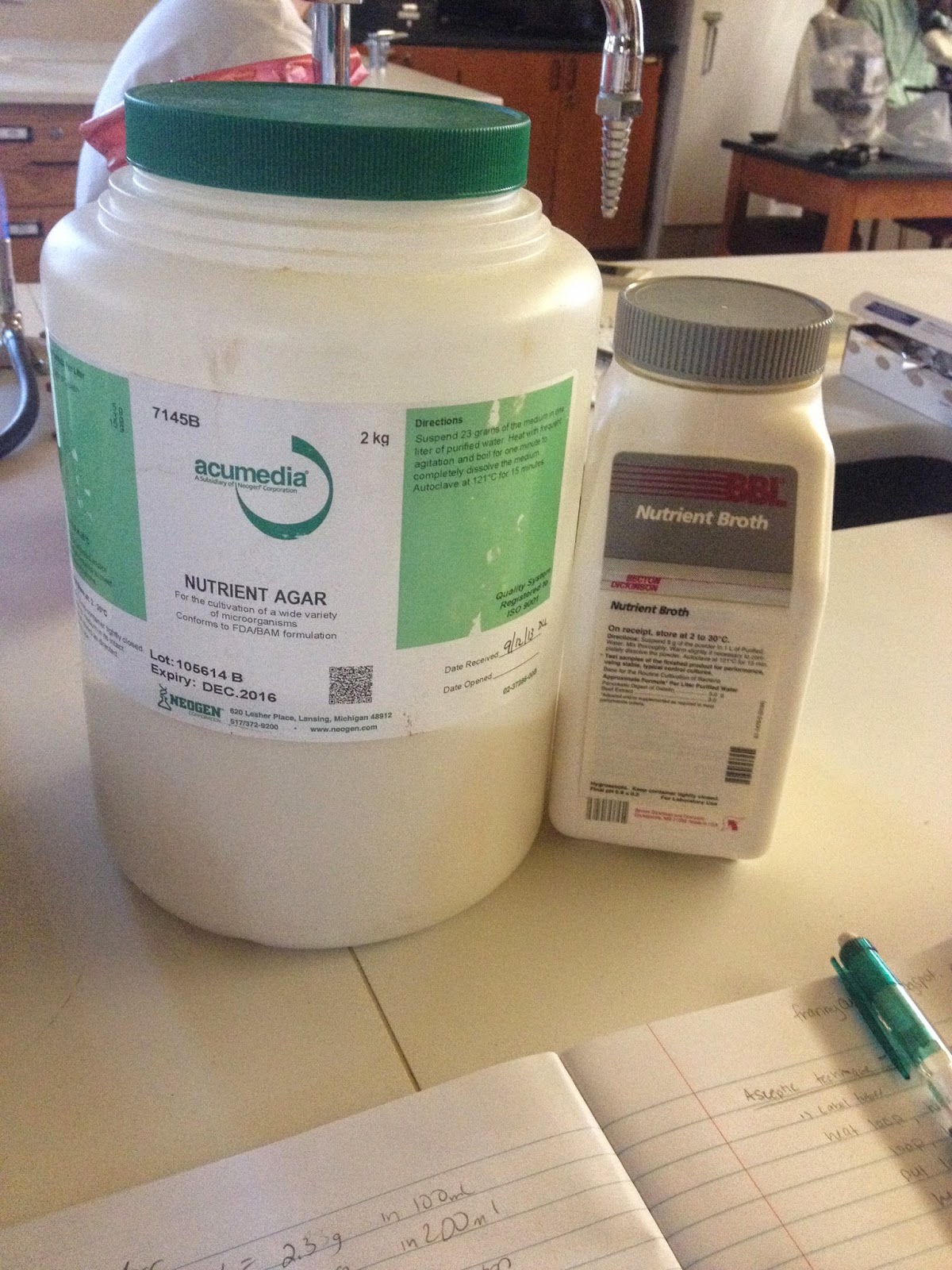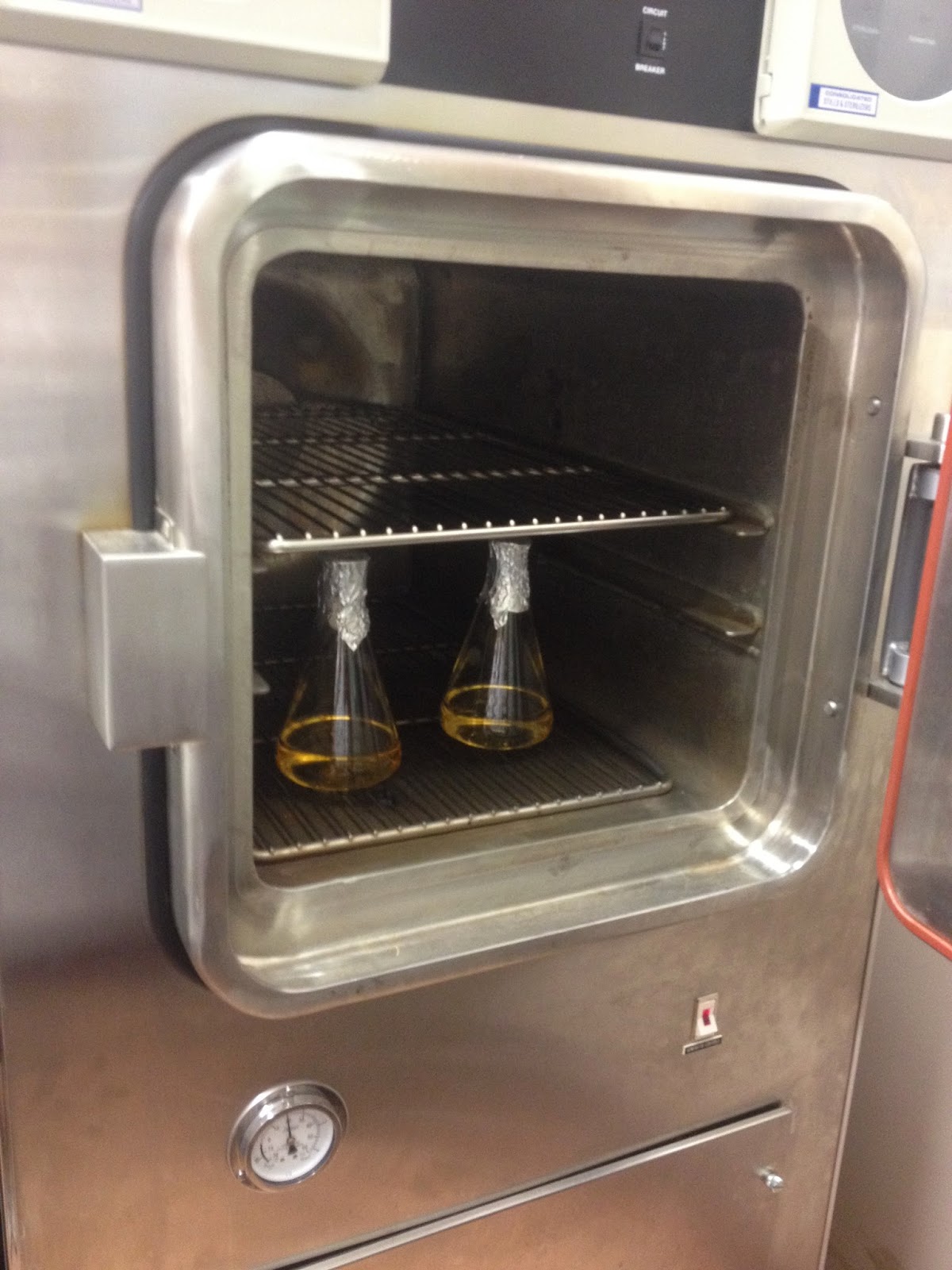Our fingerprint bacteria with colonies
After viewing our samples, we observed a few on the 3D screen and even got to wear some pretty fly looking glasses.
Lab is a good time
Following this, we got some practice using the microscopes with slides provided for us. We were able to get comfortable using the microscope and then reviewed microscope information like resolutions and magnifications. We learned about the use of oil increases the resolution because it captures all of the light to the lens.
We then made a working stock and a reserve stock of our unknown bacteria to be able to use for future experiments. We also made a streak plate and spread plate using our unknown bacteria. The streak plate was used to get a pure culture by spreading out the bacteria to grow separately. For the streak plate, using the aseptic technique, we touched the unknown bacteria and spread the bacteria on the top region of the plate. After doing the aseptic technique, we streaked the bacteria from the first region to the second region. Then, after the aseptic technique was done again, we streaked the bacteria from the second region to the third region. Finally, the aseptic technique was done again and the bacteria was streaked from the third region to the fourth region. In the center of the plate, a squiggle line was drawn. The plate was placed in the incubator at 37°C overnight.
The spread plate was next and we used a spreader with 70% ethanol and a micropipet using 200 mL of our bacteria sample. We placed 200 mL of our sample onto the agar culture plate and after doing the aseptic technique with the spreader, we spread the bacteria to cover the entire plate. The plate was placed in the incubator at 37°C overnight.
 |
| Heating our spreader to kill off bacteria |
Our first stain was the gram stain, which would tell us if our unknown bacteria was gram positive or gram negative. After doing the aseptic technique, we placed our slide on the slide holder over the sink and covered the bacteria with crystal violet dye. After 30 seconds, we rinsed off the excess crystal violet with water. We added iodine to the slide and allowed it to sit for 1 minute. After the minute was up, was rinsed the excess iodine off with water and then added a decolorizing reagent (95% ethanol) until the color on the slide stopped running. Finally, was covered the slide in safranin dye, and let it sit for 1 minute. Then, we rinsed the slide with water and blotted the slide dry with bibulous paper.
Gram-positive bacteria do not decolorize in the decolorizing reagent, meaning the crystal violet color is retained. However, gram-negative bacteria decolorize in the decolorizing reagent allowing them to accept safranin's reddish color. Because our bacteria was reddish, our unknown bacteria was gram-negative!
 |
| Dr. P explaining gram-positive cell wall |
 |
| Our gram-negative bacteria (RED!) |











